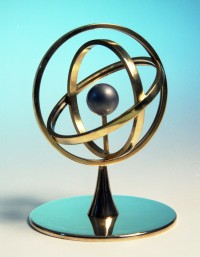Releasing Zero-Point Energy

Even at the absolute zero of temperature, theory predicts that atoms still have kinetic energy causing them to jiggle about. On a universal scale this so-called "Zero Point Energy" far outweighs all other sources of energy, but extracting it is exceptionally difficult.
Researchers in the School's Institute for Condensed Matter and Complex Systems (ICMCS) have made a number of remarkable discoveries in high pressure lithium over the last few years, and a paper published this week in top Physics journal Physical Review Letters (108, 055501, 2012) explains the previously mysterious stability of the so-called oC88 high pressure phase.
Under 60GPa of pressure - comparable to that found deep in the Earth's mantle - lithium changes its crystal structure to a form called oC88. Previous calculations showed that oC88 requires more energy to form than could be supplied by squeezing, but Eugene Gregoryanz' group showed that the atoms in oC88 move at a much lower frequency than other allotropes of lithium (see figure). Careful calculation by a team led by Graeme Ackland showed that this means that oC88 contained very low zero-point energy, and so it is formed by extracting the zero-point energy from the low pressure lithium.
The ability of lithium to tap zero-point energy is unrelated to the antimatter storage properties of dilithium in Star Trek. This is because the former is true and the latter is made up.

